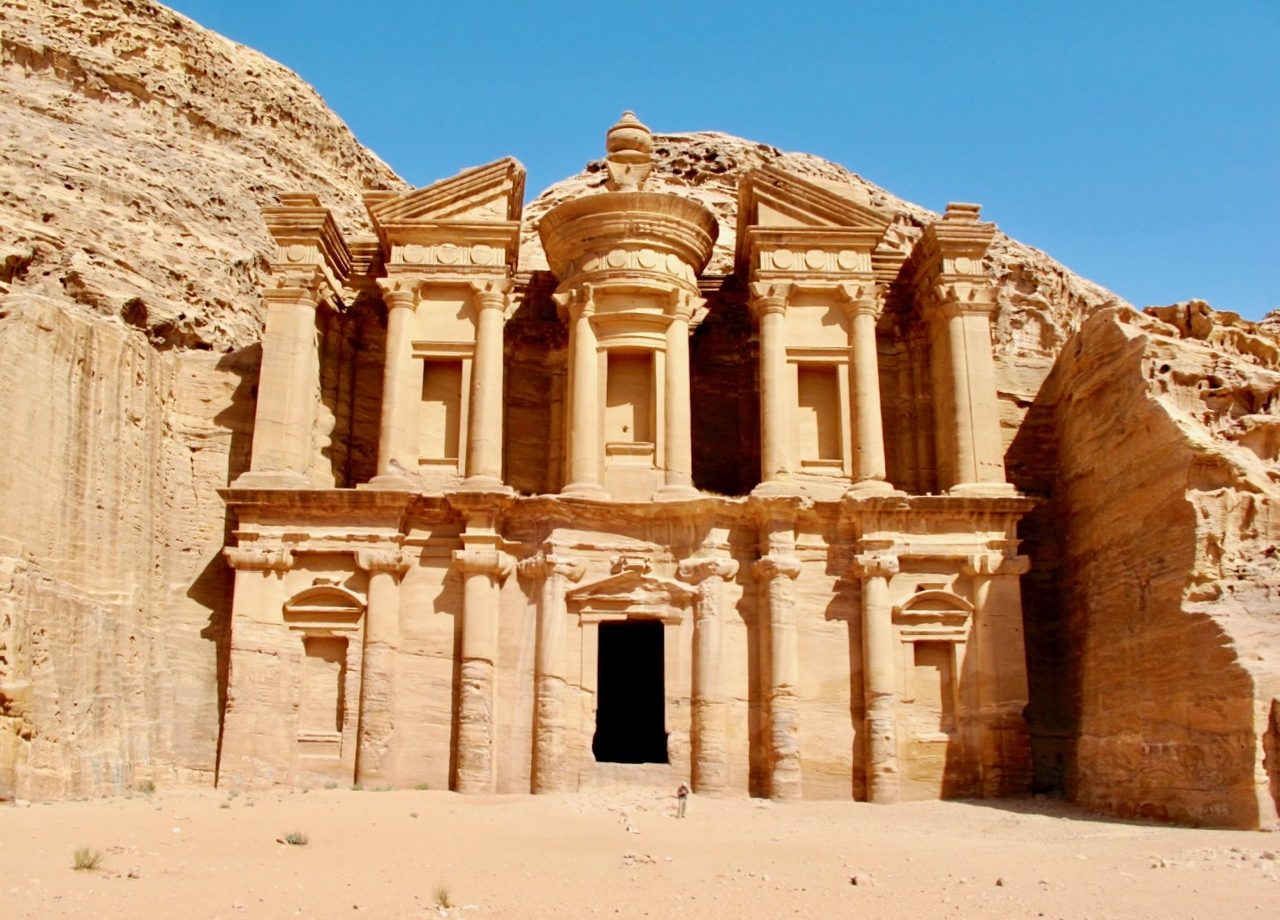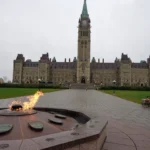
Petra is an ancient city located in modern-day Jordan that was established in the 4th century BCE as the capital city of the Nabataean kingdom. The Nabataeans were a nomadic Arab tribe that settled in the area and transformed it into a thriving city. Petra was a major center for trade, especially in spices, silk, and incense, and was strategically located on a trade route that connected the Mediterranean world with Arabia and India.
The city was built within a canyon and was only accessible through a narrow passage called the Siq. The Siq is a natural geological formation that was carved over millions of years by water erosion. The Nabataeans enhanced the beauty of the Siq by carving and shaping the rock walls and adding features such as channels and aqueducts to divert water.
Petra was a major center for trade, especially in spices, silk, and incense. The Nabataeans were skilled merchants who knew how to take advantage of their strategic location to control the trade routes and extract maximum profit. They also developed their own currency and language, which helped them to communicate and transact with traders from different regions.
The city was conquered by the Romans in 106 CE and became part of the Roman Empire. The Romans added new structures and buildings to Petra, such as a paved road and a Roman-style theater. They also introduced new architectural styles and art forms, which influenced the Nabataean culture and identity.
The Nabataeans were known for their advanced water management system, which allowed them to thrive in the desert environment. Petra is located in a region that receives very little rainfall, so the Nabataeans had to rely on clever techniques to collect and store water. They built a series of dams, cisterns, channels, and underground tunnels to capture and distribute water from natural springs and seasonal streams.
Petra is also known as the “Rose City” because of the color of the stone that was used to build it. The stone is a type of sandstone that contains iron oxide, which gives it a reddish-pink hue. The stone was quarried from the surrounding mountains and carved into elaborate structures such as tombs, temples, and palaces.
The city’s most famous structure is the Treasury, which was carved into the rock face and served as a tomb for a Nabataean king. The Treasury is adorned with intricate carvings and sculptures, including figures of mythological creatures, gods, and goddesses. The Treasury was also rumored to contain hidden treasures, which attracted many treasure hunters and adventurers over the centuries.
Petra was rediscovered by the Western world in 1812 by Swiss explorer Johann Ludwig Burckhardt. Burckhardt disguised himself as a Muslim and traveled through the region, eventually reaching Petra. He was amazed by the beauty and grandeur of the city, and his accounts and drawings helped to popularize Petra in Europe and America.
In 1985, Petra was declared a UNESCO World Heritage Site. The designation recognizes the outstanding universal value of Petra as a cultural and natural site that represents a unique blend of architectural, artistic, and engineering achievements. The UNESCO status also helps to protect and preserve Petra for future generations.
Petra is estimated to have had a population of around 30,000 people at its peak. The city was a cosmopolitan center that attracted people from different cultures and backgrounds. The Nabataeans were known for their tolerance and openness, which allowed them to maintain peaceful relations with neighboring tribes and empires.
The city was connected to other major cities in the region by a network of trade routes that spanned thousands of miles. These routes allowed the Nabataeans to transport goods such as spices, silk, and incense to distant markets, including those in Rome and China. The Nabataeans were also skilled at desert travel and used camels and other pack animals to transport goods across the arid landscape.
Petra was abandoned in the 7th century CE when the Islamic conquest of the region led to the decline of the city. The Nabataeans gradually converted to Islam and integrated into the new Muslim society, leaving behind their once-thriving city. Petra was eventually forgotten by the outside world and became a ghost town, until its rediscovery in the 19th century.
In recent years, Petra has become a popular tourist destination and attracts millions of visitors from around the world. Visitors can explore the city’s many structures and landmarks, including the Treasury, the Monastery, the Temple of the Winged Lions, and the Royal Tombs. The city is also a popular filming location and has been featured in movies such as Indiana Jones and the Last Crusade.
The Monastery is another impressive structure in Petra that was built in the 3rd century BCE. The Monastery is similar in design to the Treasury, but is much larger and less ornate. The Monastery was also used as a temple and may have served as a pilgrimage site for the Nabataeans.
The Royal Tombs are a group of tombs located on a hill overlooking Petra. The tombs were built for the Nabataean elite and are adorned with elaborate facades and sculptures. The tombs are named after their grandeur and include the Urn Tomb, the Silk Tomb, and the Corinthian Tomb.
The Great Temple is another significant structure in Petra that was built in the 1st century CE by the Nabataeans. The Great Temple was a massive complex that included a large courtyard, a central sanctuary, and various other buildings and structures. The temple was dedicated to the Nabataean gods and was a place of worship and pilgrimage.
Petra is also home to several natural wonders, such as the Petra Mountains and the Wadi Rum desert. The Petra Mountains offer stunning views of the city and are a popular hiking and climbing destination. The Wadi Rum desert is a vast wilderness area that is known for its rugged landscape and red sand dunes.
The city of Petra was featured in the popular video game series, Assassin’s Creed. The game’s developers used historical research and archaeological data to recreate Petra in detail, allowing players to explore the city and interact with its inhabitants in a virtual setting.
Petra has been the site of several archaeological excavations and surveys over the years. These excavations have uncovered new structures and artifacts that have shed light on the daily life and culture of the Nabataeans. The excavations have also revealed the extent of the city’s water management system and the engineering feats that the Nabataeans accomplished.
In 2016, a team of archaeologists from the University of California, Berkeley discovered a massive monument in Petra that is believed to be over 2,000 years old. The monument is a platform that is supported by a series of columns and is thought to have served as a public gathering place or a ceremonial site.
Petra was a center for the production of textiles and other luxury goods. The Nabataeans were skilled weavers and dyers, and their products were highly sought after in the ancient world. The city was also known for its jewelry, pottery, and metalwork.
Petra was a crossroads of different cultures and religions. The city was home to various religious traditions, including Nabataean polytheism, Judaism, Christianity, and Islam. The Nabataeans were known for their tolerance of other religions and often incorporated elements from other cultures into their own religious practices. For example, the Nabataean god Dushara was often identified with the Greek god Zeus and the Roman god Jupiter.
Petra is also known for its elaborate water management system. The city was located in an arid region and relied on a complex system of dams, cisterns, and channels to collect and distribute water throughout the city. The Nabataeans were experts in hydraulic engineering and their water management system was one of the most advanced of its time. Today, visitors to Petra can still see the remnants of the city’s water management system and marvel at the ingenuity of the Nabataean people.








